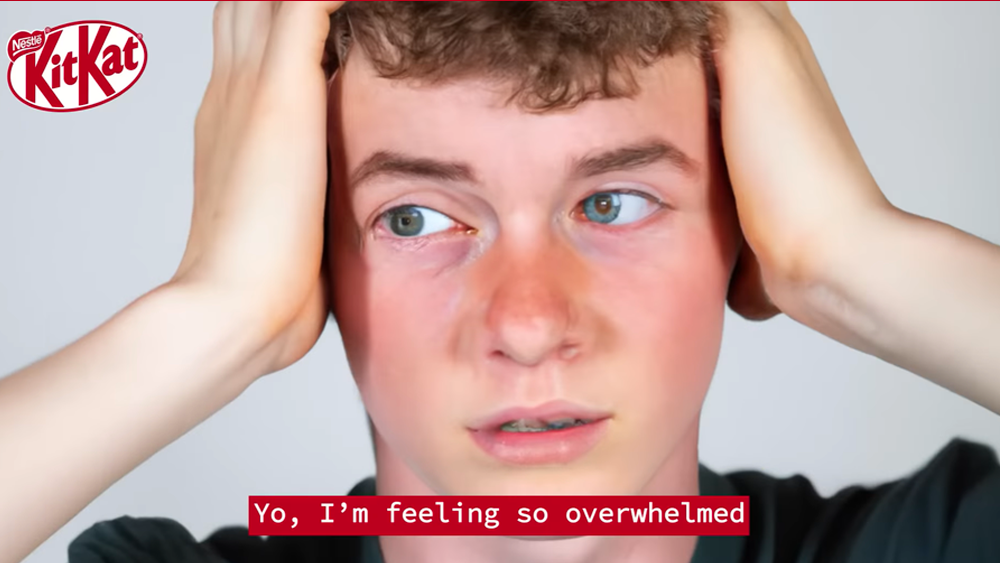If AI does finally obtain Godlike powers and destroys the world as some people are starting to fear, KitKat will now be at the top of its hit list. While some brands are already exploring what practical uses generative AI can offer their creative teams, using it to create everything from copy to imagery and even models, KitKat’s taken a more amusing approach.
In a new ad campaign, the snack brand is mocking the idea that AI could replace creative jobs, by taking its famous ‘have a break’ slogan to heart. It let its own creatives have some time off, with truly horrendous results (see our piece on how to use DALL-E 2 for more on how generative AI works).
The creative consultancy Wunderman Thompson Australia (opens in new tab) fed an AI model prompts like ‘write a KitKat ad the way Gen Z speaks’ to obtain AI-written scripts. It used a voice synthesizer to deliver the script and the AI art generator DALL-E 2 to generate imagery.
The result is a campaign in which AI effectively sends itself up, showcasing its many flaws, with daft robotic-sounding text and imagery that’s full of artifacts, including hands with six fingers and a massacre of the KitKat logo that’s typical of the way that AI can’t handle text. The results are so comically bad that you almost feel embarrassed for the poor AI models involved.
The campaign follows a tradition of timely KitKat ads, including the clever KitKat lockdown posters during the Covid-19 pandemic (though these were a concept by another artist). It’s amusing, and we love a bit of AI bashing, but I feel that KitKat’s probably got in just in time with this. In a press release about the campaign, Melanie Chen, Nestlé’s Head of Marketing Confectionery, says: “I think we all agree from the outcomes, AI won’t replace jobs in our industry any time soon without some real watch-outs.”
But Generative AI is advancing so quickly that some of these flaws may be consigned to the past in mere months. We’ve seen how fast text-to-image AI has progressed in just one year, with Midjourney already producing much more usable human faces, and even AI hands with five fingers. Voice synthesizers are already more believable than the ones used in the ad, and surely it won’t be long before AI image generators can handle text. Writing copy that doesn’t sound phoney may be a bigger challenge.
A comment from João Braga, Chief Creative Officer at Wunderman Thompson Australia, is perhaps on the ball. “We thought we’d have a crack at it ourselves and poke a bit of fun at AI—while we can.” That final observation is astute, because I’m not sure for how longer we’ll be able to continue to make fun of generative AI. We’ve already heard that Lee is planning to use AI models, purportedly to increase diversity (hiring actual diverse models doesn’t seem to have crossed its mind), and the technology is making its way into everything from video game design to animation.
Read more:

